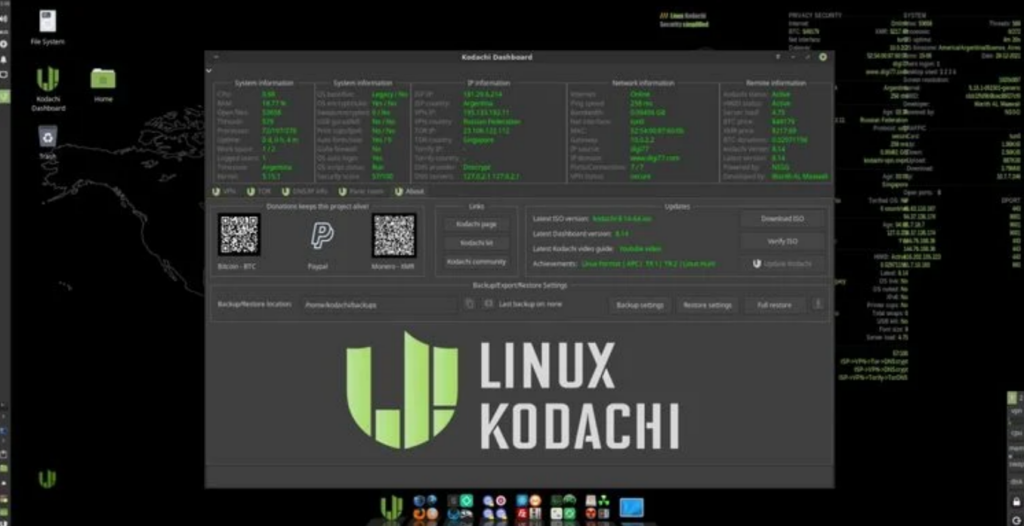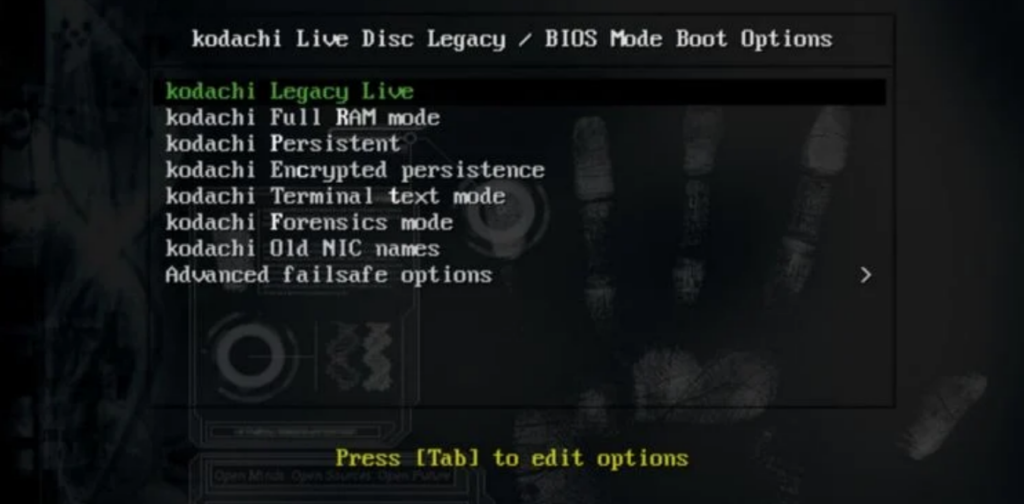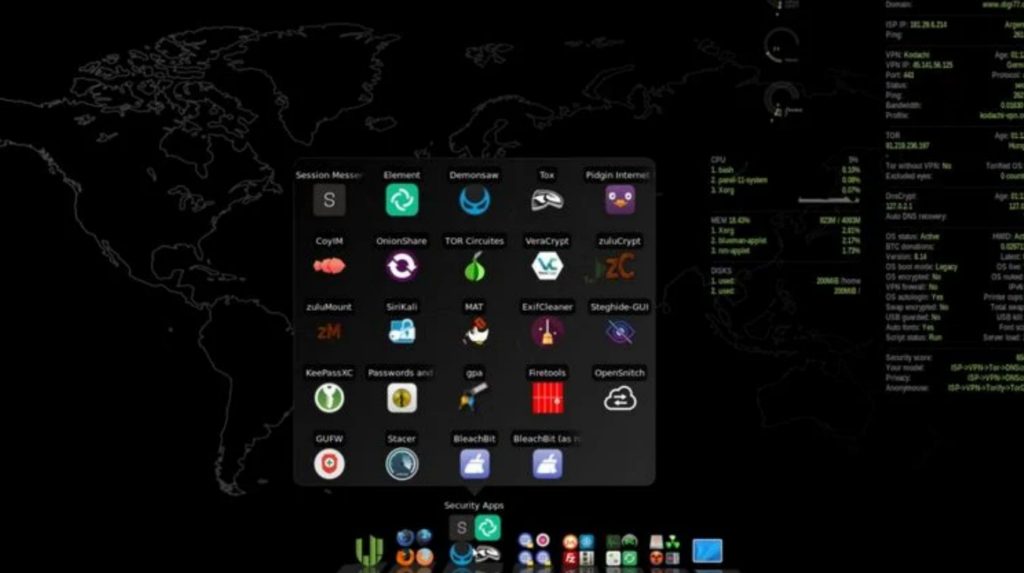Linux Kodachi: Extreme Privacy Protection Out of the Box

Want a system that leaves no trace of what you did online? Check out Linux Kodachi, a privacy-focused distro with built-in online security features.
Privacy is one of the main reasons many people switch to Linux from Windows. For new Linux users, though, the learning curve involved with configuring a Linux system prevents them from fully achieving the privacy protection they want.
There is one Linux distribution, however, that delivers extreme security and privacy protection out of the box—even if you’ve never used Linux before. With Linux Kodachi, you’re protected automatically from the moment the system boots.
What Is Linux Kodachi?
Linux Kodachi is a live Debian-based Linux distribution that you can run directly from a USB drive on virtually any computer. It is similar to the TAILS Linux distribution but with some added layers of security and an easier setup for Linux beginners.

When used as suggested by the distribution’s developers, Linux Kodachi allows you to create a secure environment that makes it virtually impossible for anyone online to identify or track you as you go about your business.
On top of encrypting and anonymizing all internet connections, the system comes with some of the most advanced security and privacy tools already installed and ready to go. Kodachi even includes an emergency self-destruct button that will destroy the entire system along with any data it may contain.
In addition to protecting you while you work, the system also covers your tracks when you’re done. When you shut down the live system, all evidence of anything you did during your sessions vanishes, leaving the host computer untouched.MAKEUSEOF VIDEO OF THE DAY
How to Install Linux Kodachi
Since Linux Kodachi is a live Linux distribution, you can boot it directly from a USB, DVD, or SD card. You can also boot and use it through virtualization software such as VMware, VirtualBox, or GNOME Boxes.
You can find all of the latest information about Kodachi along with download links for the most recent release at Eagle Eye Digital Solutions. There is a lot of information on the page that can be somewhat confusing at first glance (but well worth reading).
Download: Linux Kodachi
Once downloaded, you’ll need to create a bootable USB drive from the ISO image using a program such as Etcher. Then, of course, you’ll need to reboot your computer using the live Linux Kodachi USB.

When the live USB boots, the boot screen will have several options you can choose from. The easiest way to use Kodachi is to simply select the first live option: kodachi Legacy Live.
This will provide you with a fully functional and protected live system that leaves no trace of your session on the host computer. For a full explanation of the other boot options, you should refer to the Linux Kodachi website.

It will take a few moments for Kodachi to set itself up and then you’ll be presented with a heavily customized version of the XFCE desktop.
The desktop continuously displays a long list of details about your computer and internet connections organized into three columns on the right side of the screen.
The first column shows the status of hardware, such as processor and RAM usage. The second column displays mostly security information such as VPN and Tor status, encryption, and firewall settings.
The last column shows Linux system information such as kernel version and system uptime along with detailed network traffic information.
Privacy and Security Tools in Linux Kodachi
Kodachi comes with a wealth of privacy and security tools installed. Many of them activate automatically when the system boots. By default, with no intervention from you, the live system enables three major privacy and security-enhancing features:
- Automatic connection to a VPN (all network traffic)
- Automatic connection to the Tor network (browser traffic)
- Automatic DNS encryption
This provides multiple layers of communication encryption out of the box. For those who want more, there is a wide variety of additional options that you can enable with the click of a button.

The Kodachi dashboard shows detailed security information about your current session along with a long list of configuration options. You can change how the system handles internet connections as well as which services and providers make up those connections.
At the time of writing, you can choose from configurations for:
- Nine different VPN services plus the ability to add your own
- 36 different Tor routing options
- 23 different secured and unsecured DNS options
Linux Kodachi Software and Applications
Kodachi comes with a fully equipped toolbox of applications designed to allow you to do just about anything you want with your computer while maintaining your privacy and security.
There is a full system menu accessible from the left panel, but you’ll find most of the applications you probably want to use in folders attached to the dock at the bottom of your screen.

Among the pre-installed software, you will find several different browsers including Firefox, Tor Browser, and a few variants modified for extra security. You’ll also find an ample selection of security-oriented applications such as KeePass, OnionShare, Exif Cleaner, BleachBit, and more.
Using Kodachi With Persistent Storage
The Linux Kodachi system is fully functional when running as a live system from the USB. You can, however, create a live USB drive with persistent storage or install the operating system on the hard drive of your computer.
Installing Kodachi on your hard drive is as easy as clicking on the Install_Kodachi_Offline icon that appears on the live system’s desktop. For advanced users who want to create a bootable USB drive with persistent storage, we recommend following the instructions on the developer’s website.
Special Considerations When Using Persistent Storage

To maintain the highest level of security when installing Linux Kodachi on a hard drive, you should enable full disk encryption when the installer gives you the option.
With this option enabled, you will need to enter a password before the system boots. Without the password, the system will not load and the data on the hard drive will be unreadable.

With disk encryption enabled, you can then enable System Nuke after installation completes. This process will create a second boot password which will “nuke” the system if you enter it. When this process is triggered, encryption headers are instantly removed from the hard drive making it impossible to decrypt the data on it.
So, for example, if someone forces you to enter your password or give it to them so that they can enter it, using the special nuke password will instantly leave the entire contents of the hard drive in a permanently encrypted state.
A Warning About Users and Passwords
If you’ve installed Kodachi with persistent storage, it is a good idea to disable the automatic login function (you can do it through the Kodachi dashboard) and set a unique password for both the regular and root user accounts.
The default user account is kodachi (all lowercase) and the password for both the user account and the root account is r@@t00 (the last two digits are zeros).
Because Kodachi depends heavily on custom shell scripts, most of the functionality of the system will not work correctly if you log in under any account other than the default kodachi. You can change the passwords as you see fit, but you should not delete the kodachi user or log into the system under another user name.
Now You’re Ready to Explore the Web Anonymously
With Linux Kodachi running, you’re ready to use and explore the internet anonymously. Using the provided specialized browsers on top of the system’s base security and privacy protection, it will be virtually impossible for anyone to identify you as you move across the internet or deep web.
You can do everything you need to do (even browse dark web websites) with the confidence that you won’t be tracked.




















